In this post I will show you an example of a stamp from each of the omnibus sets that was issued by the British Commonwealth nations, starting with the 1935 Silver Jubilee. I will limit my examples to the common designs for the moment. Later on when I get into writing about specific sets, I can veer off this path and show you the non-common designs that were contributed by some of the territories or dominions. I have all the sets up to and including the 1973 Royal Wedding of Princess Anne and Captain Mark Philips. After this my coverage is somewhat spotty and I do not, at the present time have anything issued after 1986. So for those sets, I will menton their existence here for the time being, and will then add examples later as I acquire them.
There are also a few sets which were only issued by a few colonies and not the Commonwealth as a whole. However, because they involved more than 1 country and used a common design, they are omnibus sets and are included here, as small as they are.
General Comments About Collecting Points of Interest
Before I get into the specific issues and identify the points of interest associated with each issue, it would be useful for me to make a few general observations about them that will apply in most cases, so that I don't have to repeat myself as I go through each issue.
Colour
Many of the issues at first appear to have been printed using a very limited range of colours. However, while many of these colours will appear at first to be the same, it becomes apparent as you look closer that many of the colours are not the same and are different enough to constitute deliberately chosen differences. This immediately raises the question of why and how these colour differences were decided upon for a particular colony, and why others did use the same common colour. Also, it opens up the possibility of actual errors of colour where the issue for one colony is printed in a colour that was intended for another. Indeed, I believe that I may already have discovered at least one instance of this on the 1953 Coronation issue, so I am confident that there will be others. Then, there are subtle and not so subtle shade differences that can be found in many of the stamps also. Finally, I have also noticed that on some stamps the ink will have a matte sheen, whereas other stamps printed by the same printing company will be printed in an ink that is glossy, almost like the varnish inks on early Great Britain issues from the King George V period.
Paper
This is an attribute that on the first several issues appears to be fairly uniform. However, starting with the sets from the 1960's it is possible to find distinct differences in the fluorescence of the paper. So far, I have come accross the same stamps on dull, non-fluorescent paper, paper showing fluorescent fibres in the pulp and others on very bright fluorescent paper.
Perforation
The catalogues generally show these sets to have been interested with 1 or 2 different perforation measurements and only on the 1945-46 Victory issue do they list a few oddball perforations that are scarcer than the others. However, when you get deeper into the stamps you begin to notice that the some of the companies used line perforating for the set, while others used comb perforating, and then you start to find small, but consistent variations in the gauge. The existence of the vastly different measurements on the Victory issue immediately raises questions as to why only those colonies and not the others had these perforations, and whether or not they exist and are just waiting to be discovered.
In addition to the actual gauge measurements and method of perforating, there are also differences to be found in how the sheets themselves were perforated. On some sheets, the perforations extend all the way through the selvage, on others the selvage beyond the outer perforations is imperforate, while still on others the selvage can contain 1 or 2 perforation holes, extending beyond the outer perforations, known as extension holes.
Finally, there are differences in the sizes of the perforation holes themselves which show up most noticeably as differences in the width of the perforation teeth.
Re-Entries and Plate Flaws
On most, if not all the engraved issues is it possible to find re-entries, retouches and constant flaws. At first, many of these flaws appear to be nothing more than random flyspecks. However, many if not all of these are actually quite significant, because they allow you to tie a specific stamp in to a specific plate, or in the case of the 1935 Silver Jubilee issue, a combination of plates. The 1935 Silver Jubilees are the only stamps for which many of these varieties are listed, though Gibbons has begun to list a few here and there on the 1945-46 Victory issue and 1953 Coronation issue. However, as we shall soon see, with patience it is possible to find re-entries and varieties on every issue.
Even on many of the modern sets printed using photogravure or lithography it is possible to find cylinder flaws and differences between the cylinders that I am almost certain will prove to be constant, once they are properly studied and tied back to specific printing cylinders.
Usages
Generally speaking the stamps issued, at least for the early sets coincide with specific rates for mail sent either within the colony, or for mail going abroad. What is lesser known is that in the case of the early sets, sales of the definitive issues were suspended during the period of issue, so that finding commercially used examples on cover should not be too difficult. However, there are instances, like the high values of the 1948 Silver Wedding issue where finding commercial usages is very challenging inceed. Later on though, it becomes much, much more difficult to the point that by the 1980's I imagine that it must be extremely challenging, if not impossible to find the complete sets properly used, in period, on covers.
Watermark Varieties
Nearly all of the sets issued, if not all, even well into the 1980's and 90's are issued on watermarked paper. The watermark in all cases is the Crown Agents watermark is used. However, the form of this watermark is different over the years. The watermark itself can be found inverted or sideways on many of the definitive issues, so this raises the possibility of finding similar varieties on these issues also. Indeed, over the past 30 years, Gibbons has begun listing varieties on the various issues, and in nearly all cases they are quite rare and sought after.
However, these watermarks can also be found with broken or missing letters, or with the wrong crown substituted into the dandy roll that was used to impress the watermark. We see this on the late George VI issues of the 1951-1953 period, for many definitives, so they should also exist on at least some of the omnibus issues. The missing A from CA and C from CA have been listed on a few issues, but so far, no examples of the substituted St. Edward's Crown have been reported on these issues.
Double Printing and Albino Printing Varieties
On the 1935 Silver Jubilee issue there are a few issues printed by De La Rue where the design is double or triple printed, but the second and third printings are albino. So, the only way you can detect them is to notice the impression of the second and third printing strikes as the sheet was passed again through the press. These are exceptionally scarce and are listed in Gibbons. Because they exist on this issue, one immediately wonders if they can exist on the other engraved sets printed by De La Rue. There is in fact, one instance on the 1945-46 Victory issue listed for Fiji, but nothing else. Given that the entire Victory common design was printed by De La Rue, and a good chunk of the 1953 Coronation issue, I suspect there are other errors like this out there that are just waiting to be found.
The Issues Themselves
Now that I have made these general observations, it is time to run through these issues and give an example of each, while outlining the points of interest in collecting each.
The 1935 Silver Jubilee Issue

This is the supreme issue of them all, and offers nearly all the points of interest:
- Three different printing companies: De La Rue, Bradbury Wilkinson and Waterlow.
- Shade varieties for most values.
- Re-entries on some printings.
- Multiple frame and vignette plates, which can be identified through the study of plate flaws that are constant.
- Perforation varieties.
- Specimen perfins.
In addition to the above, it is possible that there may be watermark varieties also, though as yet, some 85 years on, none have been reported.
The 1937 Coronation Issue
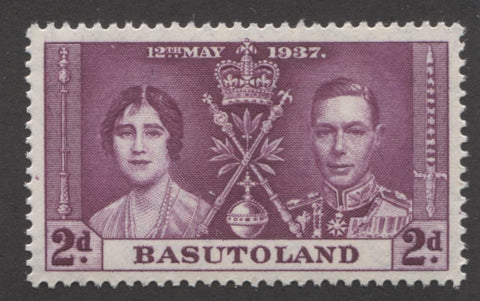
Despite being an extremely consistent and well printed set, which means fewer varieties, however with patience it is possible to find:
- Some shade differences.
- A few re-entries, retouches and plate flaws.
I haven't gotten into the detailed study of perforations yet, paper or watermarks yet, so I cannot yet conclude on whether those types of varieties are present, though there are many perforation varieties to be found on the Newfoundland Long Coronation set. All of these stamps exist with specimen perforations also and are quite sought after and expensive.
The 1945-46 Victory Issue
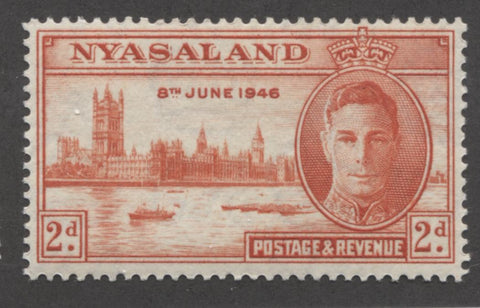
This is a set that took me a long time to appreciate, as I found it somewhat bland for the longest time. It is very detailed, but I think it loses some of its effectiveness by being printed in only one colour. However, it is one of the most inexpensive of the sets and it is replete with varieties, including:
- Many, many plate flaws.
- Differences in the design, which can be tied back to specific printings, for specific colonies.
- Perforation varieties.
- Some re-entries.
- Shade varieties.
- Watermark varieties.
- Specimen perforations.
- Matte and glossy ink variations.
I have noticed that there may also be some cream and white paper varieties, though I will have to study the papers more carefully to be certain that this isn't just toning from age.
The use of single colours to print this issue may be the result of cultural restraint at the end of the war. Even though it was a joyous occasion and one would expect a grand issue, rationing was still very much in effect and so a balance was very likely struck in its production by having a very detailed design that was produced using a less expensive process.
The 1947 Royal Visit Issue
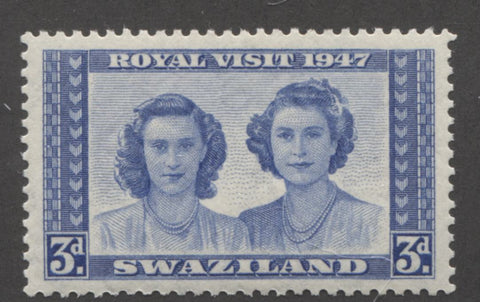
This is one of the smallest sets issued and only the South African countries participated: Basutoland, Bechanaland Protectorate, South Africa, South West Africa and Swaziland. I have yet to find any varieties, though I have only a few stamps in my possession, so I'm reasonably confident that I will find at least some eventually.
The 1948 Silver Wedding Issue

This is the most expensive basic set issued, but only because of the high values for each colony. It is the first and only set issued to employ two entirely different printing processes: photogravure for the low values and engraving for the high values. I have not found any varieties yet on the high values, but the low values have yielded:
- Some shade varieties.
- Some constant cylinder flaws.
- Some cylinder differences, which show up in differences in the amount of contrast between light and dark portions of the design.
The high values exist with horseshoe "specimen" perforation and are all quite rare. In time, I suspect that some perforation and watermark varieties, as well as shade variations on the high values will surface.
The 1949 75th Anniversary of the Universal Postal Union Issue
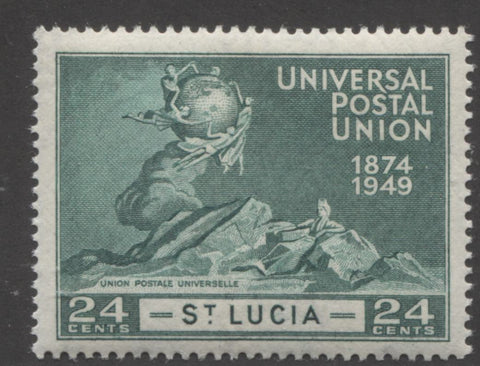
This is the first of several issues that are truly international, in the sense that every stamp issuing country in the world participated in the issue, although to the best of my knowledge, only the British Commonwealth used a common design. Well actually, the above is one of four common designs used, as with the exception of Southern Rhodesia, all issuing colonies issued 4 stamps each.
I was not particularly fond of this set for a very long time, but in the last few years I have really come to quite like it. This is one of the harder sets on which to find varieties, but I have found a few:
- Shade varieties.
- Re-entries.
- Plate varieties.
Gibbons does list some rare watermark varieties, as well as some omitted surcharges on the Aden states. I suspect that with time there will also prove to be some perforation varieties as well.
This issue was printed by two firms: Waterlow and Bradbury Wilkinson, the later of which employed two printing processes to print the stamps: engraving and surface printing, which was used for the colony names.
The 1951 University of British West Indies Issue
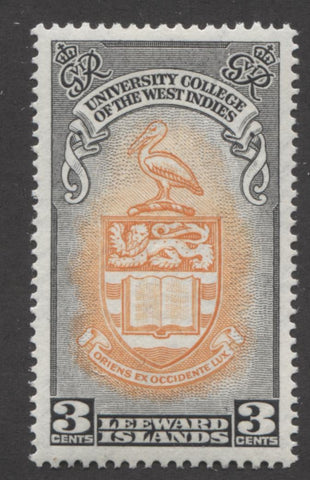
This Waterlow production is another of my favourites, and until very recently was very inexpensive. It is only 24 beautiful bicoloured stamps from the British West Indies colonies. I have found shade varieties on some stamps and one very nice re-entry so far and am looking forward to what I might find as I continue to study the stamps.
The 1953 Coronation Issue
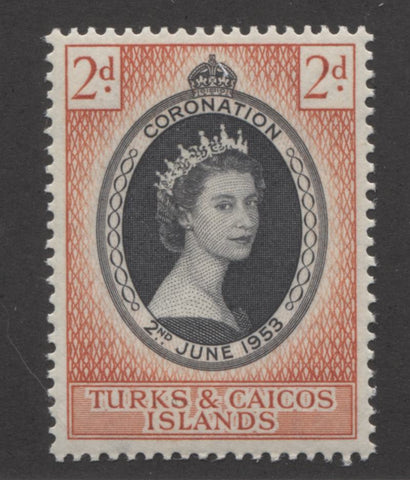
This lovely issue is my third favourite (see a pattern here? I like bicoloured stamps!). Like the UPU issue, it is printed by two firms, but this time it is De La Rue and Bradbury Wilkinson. Again, for the longest time, this was a very inexpensive set, though it has become quite a bit more expensive in recent years, with the plate blocks selling for a lot of money.
It has proven to be a very happy hunting ground for varieties. In my studies so far, I have found:
- Shade varieties and possible errors of colour.
- Re-entries.
- Distinct and I believe plateable differences in the appearance of the Queen's portrait.
- Watermark varieties
- Potential white versus cream paper varieties.
I have yet to look at the perforations, though again, I expect to find some worthwhile varieties as I study the stamps.
1953 Rhodes Exhibition
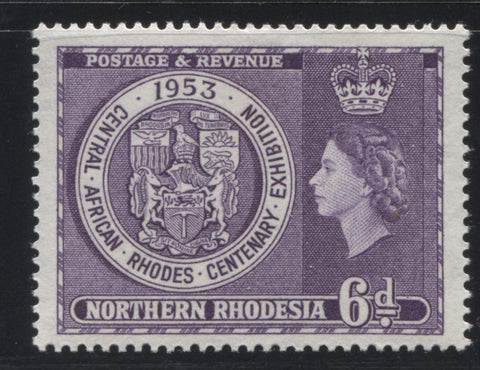
This a another of the very small issues that was only issued by the Rhodesias: Nyasaland, Northern Rhodesia and Southern Rhodesia. I only have three stamps so far, one of each country, so I do not yet know which, if any varieties can be foud on this issue.
1958 British West Indies Federation
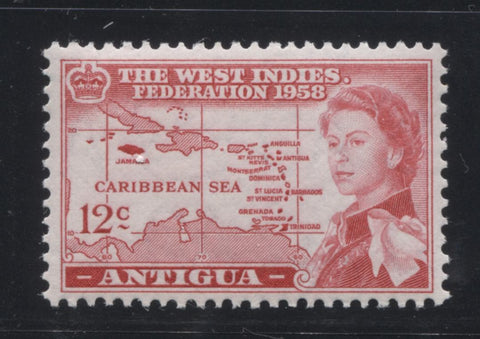
This is another relatively small and attractive West Indies issue, printed by Bradbury Wilkinson. The main variety I have found so far are differences in paper fluorescence, but I suspect that with careful study of the islands in the design, that I will eventually find some plate flaws. I am also hopeful that some perforation varieties will turn up too.
The 1963 Freedom From Hunger Issue

This is the second issue that is truly international, along with the next issue. As far as I know, most other world nations participated, though again, I think that the British Commonwealth and French Colonies were the only ones to use common designs.
This was the first early modern two tone photogravure issue to be issued and was produced by Harrison and Sons, which specialized in this type of printing. I do not have a lot of stamps from this issue yet, but I have studied enough stamps printed by Harrison's from other issues to expect that I will find:
- Some shade varieties.
- Cylinder varieties.
- Some variations in the way the sheets are perforated.
- Differences in paper fluorescence.
- Watermark varieties.
The 1963 Red Cross Centenary Issue
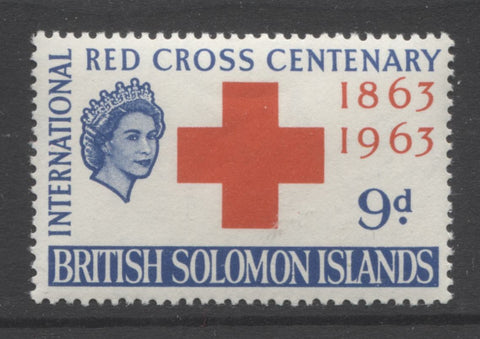
Although a little on the drab side, this issue, which was lithographed by Bradbury Wilkinson, does have some shade varieties, variations in paper fluorescence and watermark varieties. Also, there are probably some good colour shifts involving the red cross itself, as it appears that two passes through the press were required to print most stamps. Several of the non-common designs were printed by Harrison and Sons using photogravure.
The 1964 Shakespeare Festival Issue

This is a nice little issue around 20-25 stamps and is all printed by Harrison's using photogravure, except for the 2/6d of Great Britain, which is printed by Bradbury Wilkinson using engraving. There are some nice shade varieties and I expect many of the same varieties to be found on the other photogravure issues printed by Harrison and Sons.
The 1965 International Telecommunications Union Issue

This is the first of no fewer than 5 issues that come out in 2 years and the design aesthetic becomes very 60's. For this reason I did not like these at all growing up, but now that I have a greater appreciation for the period, I have grown to like them. They are another truly internatonal issue, and the common design was printed using lithography, but I believe De La Rue this time. Either that or Bradbury Wilkinson.
I only have one set, but I have seen offered for sale online several constant plate flaws, so I know these exist. My set exhibits some interesting variations under UV light, so I know that there are paper varieties to be found. I suspect that there are also watermark and perforation varieties as well, and possibly even some shades.
The 1965 International Co-Operation Year Issue

This is one of my least favourites, as I am not particularly keen on the colour combinations of which there are only 2 on the entire set. Again, it is a largely International issue and the Commonwealth issues are printed by De La Rue using lithography. However, despite its lack of aesthetic appeal to me, I know there are paper, shade and watermark varieties to be found as well as constant plate flaws.
The 1966 Royal Visit to the Carribean Issue
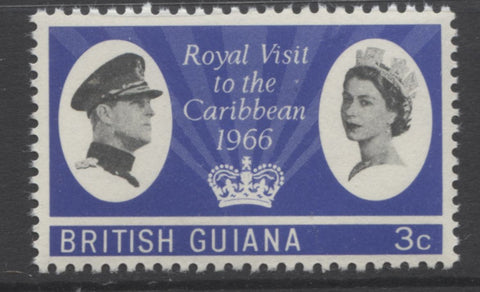
This is the third Carribean-focused issue and a fairly plain and lithographed production that employed only 2 colour combinations: red and black and blue and black, as shown above. However, like the other issues produced this way, I suspect that there will be paper, perforation, watermark, shade and plate varieties to be found.
The 1966 Churchill Memorial Issue

This is a nice issue that was printed by Harrison, using four dominant colours: bright blue, dark brown, dark green and violet. I haven't yet studied enough stamps to find any perforation and watermark varieties, but I have found differences in the Queen's portrait, which indicate different cylinders, and some variations in paper fluorescence.
The 1966 World Cup Issue

This international issue was printed by De La Rue using lithography. I have found constant plate flaws and differences in paper fluorescence on the stamps that I have examined so far. But, I suspect that there will at least be some watermark varieties also.
The 1966 World Health Organization New Headquarters Issue

This is the second issue from 1966 to be printed by De La Rue using lithography. I have not yet found any varieties, as I only have a few stamps from it, but I suspect there will be the same varieties on this as on the other lithographed sets.
The 1966 20th Anniversary of UNESCO Issue
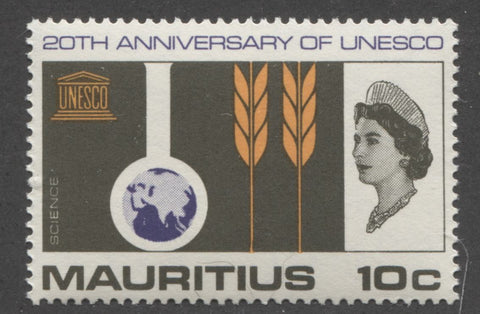
This is the last of the 1966 issues and the last set for almost 6 years. It was also produced using lithography and my comments in respect of it mirror those I have made for the other sets printed using lithography. I have already found a few small shade varieties though.
The 1972 Silver Wedding Issue
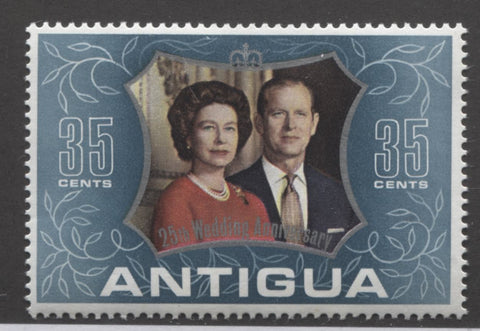
This is a beautiful set that shows Harrison's work at its finest and also shows the evolution of Harrison's process, which by 1972 is blending several colours together, rather than layering one colour on top of or beside another, as was done on the earlier sets.
I have found paper varieties, shade varieties, inverted watermarks and differences in the appearance of the portraits, which suggests the use of different printing cylinders.
The 1973 Royal Wedding Issue
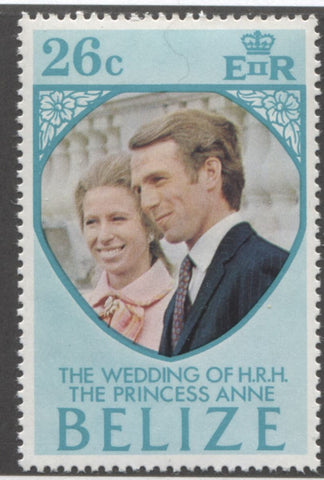
This is the first modern lithographed issue to, once again blend colours and I believe it was either printed by House of Questa or Format Security Printers, both companies that excel at modern multi-colour lithography. I do not yet have a lot of stamps from this 44 stamp set, so I cannot yet comment on what varieties there are to be found, but I am banking on some perforation and watermark differences, as well as possibly some shades.
The 1977 Silver Jubilee Issue

I have very few stamps of this issue, and there is not really much of a common design used for it. It was printed using both lithography and photogravure by at least several different printing companies. I expect there will at least be some watermark varieties to be found on it.
The 1978 25th Anniversary of Queen Elizabeth II's Coronation Issue

This is the first issue for which I do not, as yet have any stamps. They were printed by Harrison using photogravure. I expect that there will at least be some watermark varieties to be found on the stamps, and possibly some cylinder differences.
The 1980 80th Birthday of the Queen Mother Issue

This small set of 20 stamps was printed using lithography I think, though I am uncertain as to who printed it. I have yet to determine what varieties there are, though I am anticipating some gum variations and watermark varieties.
The 1981 Royal Wedding Issue

This set is one of the first larger ones after 1973 and was primariy produced by lithography. It is watermarked, so there are very likely to me some inverted watermarks and I am fully expecting that careful study will turn up some perforation and paper varieties also.
The 1982 21st Birthday of Princess Diana Issue

This issue appears to be a lithographed issue and I only have a few sets on hand, so I have not yet had any opportunity to examin them closely. I expect that I will find primarily watermark and perforation varieties.
The 1984 250th Anniversary of Lloyd's List Issue

This is another set for which I do not have any stamps at the present time. Like the other sets from this period, I think the differences will lie in perforations and watermarks.
The 1985 85th Birthday of the Queen Mother Issue

This set is another lithographed production, I believe by Format. As such I believe it is unwatermarked, so I am not anticipating very many if any varieties on it as I study the stamps.
The 1986 60th Birthday of Queen Elizabeth II Issue
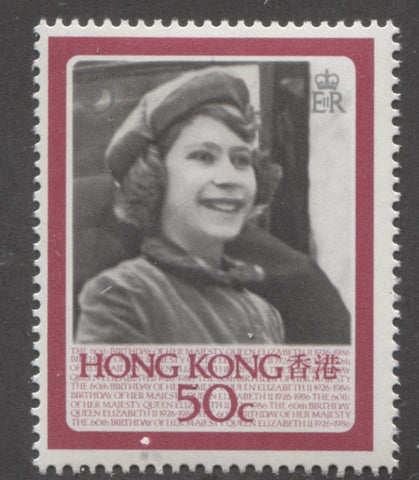
This is the first Harrison and Sons produced photogravure issue in a long time. As such it holds the potential for many of the same varieties as the earlier sets. In the few stamps that I do currently have, I do notice some subtle variations in the gum on the stamps.
The 1986 Royal Wedding Issue
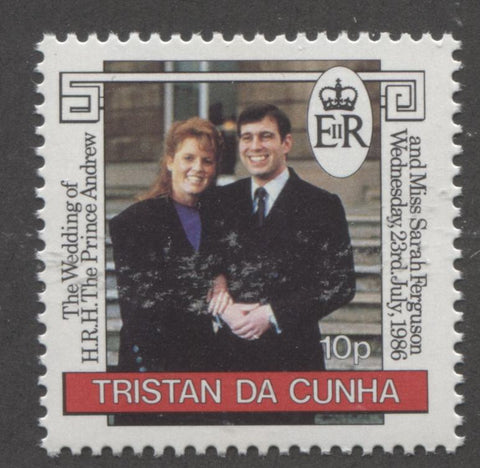
This is another lithographed Format produced issue that used two different common designs. Again, I do not have a large enough number of stamps from it yet to have done any meaningful study, but I am not anticipating finding many varieties on it. but we'll see.
That's all I have at the moment. There are many omnibus issues issued after 1986, but I do not have any examples yet. The following issues came out after 1986 up to 2003:
- 1986 300th Anniversary of Lloyds of London.
- 1989 20th Anniversary of Apollo Moon Landing.
- 1990 90th Birthday of the Queen Mother.
- 1991 65th Birthday of Queen Elizabeth II and 70th Birthday of Prince Philip.
- 1992 40th Anniversary of Queen Elizabeth II's Acession to the Throne.
- 1993 75th Anniversary of the Royal Air Force.
- 1998 80th Anniversary of the Royal Air Force.
- 1995 50th Anniversary of the end of World War II.
- 1995 50th Anniversary of the United Nations.
- 1996 70th Birthday of Queen Elizabeth II.
- 1998 Princess Diana Memorial Issue.
- 1999 Royal Wedding Issue.
- 1999 30th Anniversary of Apollo Moon Landing.
- 1999 100th Birthday of the Queen Mother.
- 2000 Prince William's 18th Birthday.
- 2002 50th Anniversary of Queen Elizabeth II's Reign.
- 2002 Queen Mother Memorial Issue.
- 2003 Head of Queen Elizabeth II Issue.
- 2003 50th Anniversary of the Coronation of Queen Elizabeth II.
- 2003 Prince William's 21st Birthday Issue.
I've never seen or handled most of these later issues, so I cannot speculate at this point as to what the main points of interest in collecting them are. However, that is a large part of the fun in collecting: to discover through study. To be certain, these issues will all be very, very difficult to find used, especially on cover.
There you have it, my tour of the issues that make up the collecting field. In my next post I will begin to talk about how I am approaching the collection and study of these stamps.


1 comment
Hi Thank you for your interesting article. I have a 1953 book of coronation stamps of the commonwealth countries a full collection I am looking to find out the value if that is possible
Warmest regards Christine